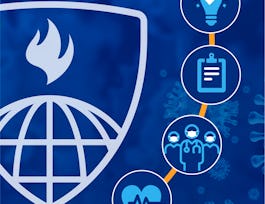What is a genome? A genome contains all of the information that a cell needs to develop, function, and reproduce itself, and all the information needed for those cells to come together to form a person, plant, or animal. Genomes contain an organism’s complete set of genes, and also the even tinier genetic structures that help regulate when and how those genes are used.
The ability to regrow a torn ligament, the clues that might predict the onset of mental illness, the nutritional potential of crops, and even the history of life itself, are all encoded in genomes. By taking this course, you will discover how scientists are deciphering the language of genomes to learn how to develop sustainable food and fuel supplies, improve disease treatment and prevention, and protect our environment. Professor Robinson is the main instructor for this course. In addition, each module features several guest instructors. These guest instructors come from diverse fields of study—biology, physics, computer science, and many others—and pursue diverse research goals, yet they share a common interest in genomic approaches and technologies. The guest instructors include: - Elizabeth (Lisa) Ainsworth, Associate Professor of Plant Biology - Mark Band, Director of the Functional Genomics Facility - Alison Bell, Associate Professor of Animal Biology - Jenny Drnevich, Functional Genomics Bioinformatics Specialist with High-Performance Biological Computing - Christopher Fields, Associate Director of High-Performance Biological Computing - Bruce Fouke, Director of the Roy J. Carver Biotechnology Center - Glenn Fried, Director of the Carl R. Woese Institute for Genomic Biology Core Facilities - Nigel Goldenfeld, Professor of Physics - Brendan Harley, Assistant Professor of Chemical and Biomolecular Engineering - Alvaro Hernandez, Director of the High-Throughput Sequencing and Genotyping Facility - Victor Jongeneel, former NCSA Director of Bioinformatics and former Director of High-Performance Biological Computing - Kingsley Boateng, Senior Research Specialist with the Carl R. Woese Institute for Genomic Biology Core Facilities - Stephen Long, Professor of Plant Biology and Crop Sciences - Ruby Mendenhall, Associate Professor of African American Studies - William Metcalf, Professor of Microbiology - Karen Sears, Assistant Professor of Animal Biology - Saurabh Sinha, Associate Professor of Computer Science - Lisa Stubbs, Professor of Cell and Developmental Biology - Rachel Whitaker, Associate Professor of Microbiology - Derek Wildman, Professor of Molecular and Integrative Physiology - Peter Yau, Director of the Protein Sciences Facility


















